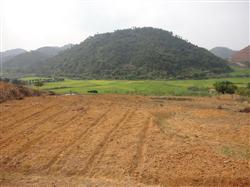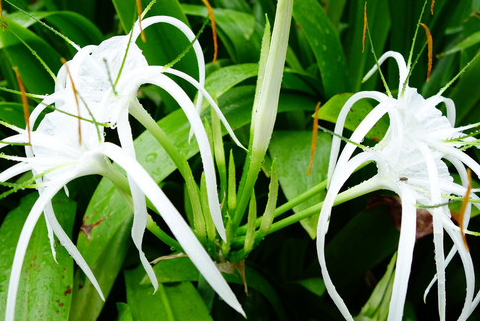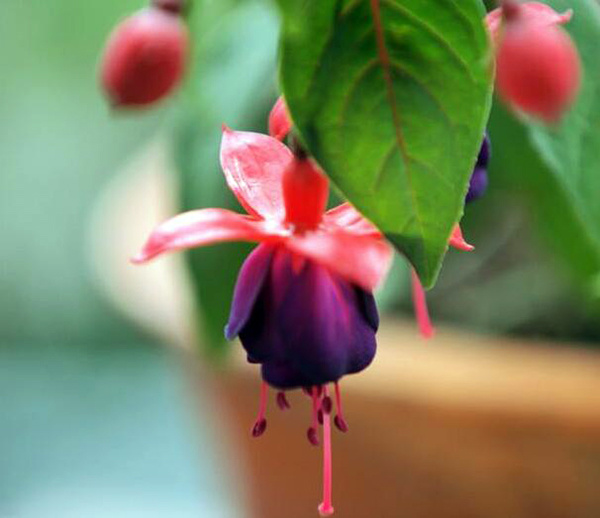Clayey Learn more about Clayey
-
What are the characteristics of clayey soil? What is the right thing to grow?

What are the characteristics of clayey soil? What is the right thing to grow? Clayey soil is a kind of soil with low sand content, fine particles, slow water infiltration, good water retention and poor ventilation. If the clayey soil is very wet clayey soil, wetland plants can be planted: Reed,
2020-11-09 Clayey soil have what characteristic suitable planting clayey -
What are the benefits of applying microbial fertilizer and bio-organic fertilizer to clayey land?

Microbial fertilizer and bio-organic fertilizer are two very popular microbial products in the market in recent years. They are different in function. In production, they are often used together to improve the soil with poor structural properties.
2018-06-18 -
What kind of soil is suitable for growing blueberries?

What kind of soil is suitable for growing blueberries? Please guide the most ideal soil type for blueberry cultivation is acid sandy loam, sandy soil or peat soil with loose, well-aerated, moist and high organic matter content. Blueberries are cultivated on calcareous soil, clayey soil, dry soil and soil with low organic matter content.
2018-07-19 -
Method for cultivating taro leaves

1. Soil: Colocasia esculenta likes clayey soil, which is prepared by mixing five parts of clayey soil, two parts of decayed leaf soil and three parts of sand. 2, light: flower taro likes sunshine, should not be too strong. If the light is insufficient, the leaf color spots become dark, and the leaves grow long and weak. 3. Watering: Colocasia esculenta likes wet water and needs a lot of watering in spring and summer.
2018-11-17 -
Yellowing of bamboo leaves on tortoise back: soil discomfort

The reason is that tortoise back bamboo has well-developed fleshy roots and has high requirements for soil air permeability. Clayey or slightly clayey soil is disadvantageous to its growth. If the soil is not changed for a long time or the air permeability of the soil is poor, it will cause soil hardening, affect the respiration of the root of the tortoise back bamboo, make the tortoise back bamboo grow poorly and the leaves turn yellow.
2018-11-15 -
Planting conditions of Dahongpao Chestnut

Soil: Dahongpao chestnut is suitable for acidic loose soil and can not be planted in clayey soil. Temperature: relatively cold-resistant, the suitable growth temperature is 8-15 ℃, but it can also grow normally at the temperature of-35 ℃. Young trees with poor cold resistance need to take good measures of heat preservation and cold protection.
2020-11-08 Big red robe chestnut planting condition summary soil big -
Culture method of water ghost banana

1. Soil water banana has strong adaptability to soil, and it is most suitable for rich and loose sandy soil rich in humus, which can be mixed with peat soil, garden soil and river sand. two。 Temperature Water Ghost Banana likes a warm environment, the suitable growth temperature is 15-25 ℃, it is not hardy, and it should not be less than 5 ℃ in winter.
2018-11-26 -
Cultivation techniques of big hazelnut

Hazel is suitable for planting on sunny slope, and the growth performance of sandy loam is better than that of clayey soil, and it has strong adaptability to all kinds of soil. Powdery mildew and heart-eating insects can be controlled twice a year in spring and summer. Hazel trees share male and female flowers, but a single variety cannot self-pollinate or have special affinity for pollination.
2020-11-09 Large hazelnut cultivation techniques hazel suitable sunny slope planting sand -
The reason why the bamboo leaves on the back of the tortoise turn yellow! What about the yellowing of bamboo leaves on the back of hydroponic turtles?

Phyllostachys pubescens is a potted foliage plant loved by families. If it is not maintained properly, it is easy to have yellow leaves, which will affect the ornamental value, and seriously affect the growth and even the death of plants. Tortoise back bamboo is native to the Mexican rainforest. It likes a warm and humid living environment and avoids strong light exposure and drying.
2020-10-13 -
When will Polygonatum be planted?

Polygonatum polygonatum is generally planted in August or March, and Polygonatum polygonatum should be planted in areas with sufficient fertility, complete soil structure and good conditions for drainage and irrigation, or in clayey or sandy soil, and artificial planting will be in semi-sunny areas. only enough sun is needed.
2020-11-08 Huang Jing when planting Abstract in general in August -
How to plant Rhizoma Polygonatum with higher yield and better benefit

Land preparation: choose clayey soil or sandy soil. Sowing method: tuber transplanting and seed direct seeding. Reasonable density: barren plots can be planted at a distance of 20cm per row and 10cm per plant, while fertile plots can be planted according to each row.
2020-11-08 Huang Jing how planting more high yield benefit better summary site selection -
In which areas of our country is black loessial soil distributed? What is suitable for growing?

Black loessial soil is a kind of chernozem soil with residual clayey layer (commonly known as black loessial soil layer) developed on the parent material of loess. There is a dark gray humus layer with hidden sticky characteristics in the upper section of the black loessial soil. although this layer is deep and loose, the humus content is not.
2020-11-09 Black loess distribution in our country which areas are suitable for planting -
How to control peanut fruit rot caused by root rot or fruit rot

How to control peanut fruit rot caused by root rot or fruit rot
2018-07-14 -
What kind of figs? The demand for soil is not high, and both sandy soil and loam can be planted.

Figs can be planted in sandy soil, loam and all kinds of clayey soil, which does not have high requirements for soil and has strong salt tolerance, and can even be planted in coastal shoals or inland saline-alkali land, if the soil layer is loose, fertile and good drainage, the soil is
2020-11-08 What soil figs yes requirements not high sandy soil -
Causes and treatment methods of yellowing of leaves of Phyllostachys pubescens

Tortoise back bamboo is a famous indoor potted foliage plant because of its beautiful plant shape and peculiar leaf shape. Although it is not difficult to raise tortoise-backed bamboos, if we do not pay attention to the feeding methods, it will often lead to yellowing of leaves, although yellowing of leaves is a common problem in plants.
2018-07-01 -
How to cultivate plantain and green plant

How to cultivate plantain and green plant
2019-03-06 -
The Culture method of Water Ghost Banana the function and effect of Water Ghost Banana

The Culture method of Water Ghost Banana the function and effect of Water Ghost Banana
2019-03-06 -
What if the bamboo leaves turn yellow on the back of the turtle? Causes and solutions

There are many reasons for the yellowing of bamboo leaves on tortoise back. If you can cut off the yellow leaves after they are found to be yellow, and then place them in a ventilated place, the reasons for yellowing bamboo leaves are generally soil discomfort, too much or too little watering, too strong or dark light, too low temperature, too little fertilization, poor ventilation and so on.
2018-09-01 -
The culture method of hanging bell flower

The soil requires that the substrate of potted bell flower should be cultivated with fertile, loose and well-drained soil. generally, rotten leaf soil and Gaza loam soil can be evenly mixed with rotten organic fertilizer and phosphate fertilizer, and there is no need to apply base fertilizer to avoid rotting roots. The clayey and heavily consolidated soil is disadvantageous to the growth of the bell flower, let alone the seedlings that have just survived cuttage.
2019-02-20 -
[tortoise back bamboo] what if the leaves of the tortoise back bamboo turn yellow
![[tortoise back bamboo] what if the leaves of the tortoise back bamboo turn yellow](https://www.mysheen.com/static/assets/images/nopic.gif)
What about the yellowing of the leaves of the tortoise-backed bamboo? the tortoise-backed bamboo is a family plant that many people like to breed. When planting the tortoise-backed bamboo in the family, if it is not maintained properly, the tortoise-backed bamboo is very easy to produce yellow leaves, which affects the ornamental value.
2018-06-26
